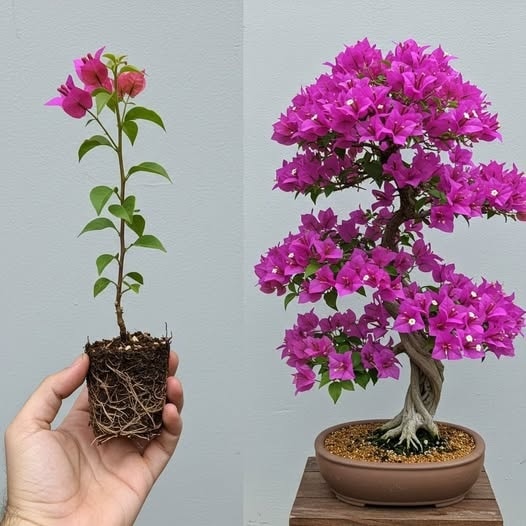Absolutely! Here’s a detailed, visually inspiring article for your recipe-style guide on creating a **Bougainvillea bonsai**:
—
## 🌺 Creating a Stunning Bougainvillea Bonsai: Step-by-Step Guide
A blooming bougainvillea is already a feast for the eyes—but a **bougainvillea bonsai**? That’s a *living work of art*. With its vivid blooms and graceful, twisted trunk, this tropical beauty can be trained into a bonsai that’s both delicate and dramatic.
Whether you’re a beginner to bonsai or a seasoned enthusiast, this guide will walk you through everything you need to know to transform a regular bougainvillea plant into a stunning bonsai masterpiece.
—
### 🌱 Why Bougainvillea Makes a Great Bonsai
* **Striking blooms:** Available in vibrant colors—magenta, purple, red, orange, and white
* **Flexible branches:** Easy to shape and wire into desired forms
* **Fast-growing:** Responds well to pruning and training
* **Tropical appeal:** A unique alternative to traditional bonsai trees like ficus or juniper
—
## 🧰 What You’ll Need
* A young **bougainvillea plant** (nursery size is fine)
* **Bonsai pot** with drainage holes
* Well-draining **bonsai soil** (or mix of peat, perlite, and sand)
* **Pruning shears**
* **Bonsai wire** (aluminum or copper)
* Root rake or chopstick (for soil work)
* Fertilizer (balanced or low-nitrogen)
* Spray bottle or watering can
—
## 🪴 Step-by-Step: How to Create a Bougainvillea Bonsai
### 1. **Choose Your Plant**
Select a healthy, young bougainvillea with multiple branches and a woody base. Avoid plants that look leggy or weak.
### 2. **Prune and Shape**
Use sharp shears to prune away excess or unhealthy branches. Focus on:
* Removing dead or crossing limbs
* Defining a main trunk and initial shape
* Leaving room for new growth and airflow
🔁 *Tip:* Bougainvillea tolerates hard pruning—don’t be afraid to cut it back boldly if needed.
### 3. **Wire the Branches**
Use bonsai wire to gently bend and shape branches. Bougainvillea branches are flexible when young, so this is the perfect time to create:
* Cascading shapes
* S-curves
* Windswept styles
Wrap wire loosely in a spiral to avoid damaging bark. Leave wired branches for a few months, checking regularly to avoid wire marks.
For Complete Cooking STEPS Please Head On Over To Next Page Or Open button (>) and don’t forget to SHARE with your Facebook friends
ADVERTISEMENT

